Cats come in all shapes and sizes and breeds, with many displaying similar colors and familiar patterns on their coats. The most common colors for felines are black, white, and orange, either as single solid coat color or a patterned combination of any of these three.
But thanks to the quirks of genetics, certain colors and coat patterns are much rarer in the feline world, making them highly desirable and often expensive.
We investigate the science behind the tone of a feline’s fur and list 10 of the rarest coat colors and patterns you can find in the cat world.
It’s all in the Genes
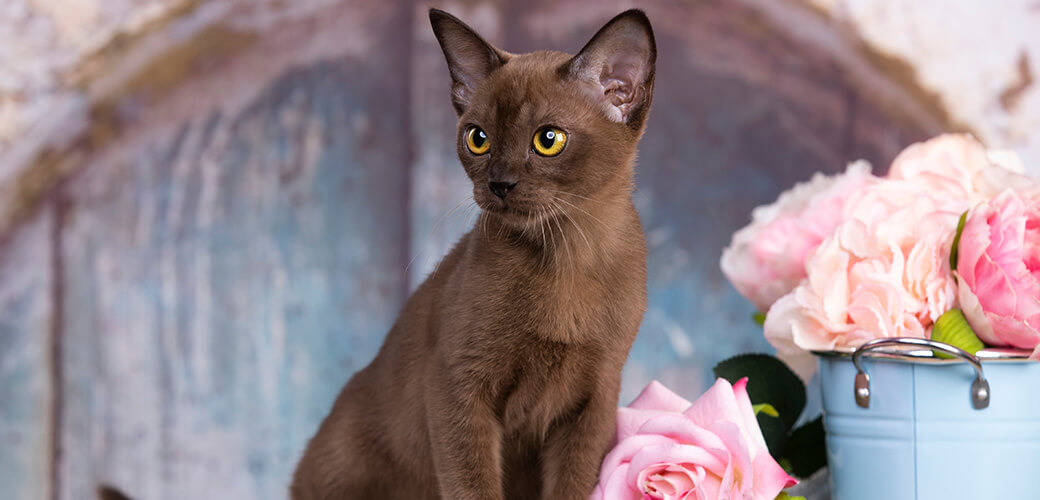
Whether you own a typical ginger tom or have your heart set on a calico or lilac, the color of a cat and its coat pattern are determined by its genes. The genetics of a cat’s coat is complex, especially regarding genetic variations and the interaction between different genes. But the starting point is what a cat inherits from its mother and father.
Every cat has 19 pairs of inherited chromosomes – one from each parent – which contain the DNA that determines how it will develop, including the color and texture of its coat and any patterns on its fur. Each pair’s genes – or alleles – can be dominant or recessive, with a dominant allele taking center stage over the recessive allele. This means you need two copies of a recessive gene for a trait to develop.
Cats only have two true colors – black and red. And this applies to mixed-breed cats as well as purebred cats. Every other coat color you may see in felines is a genetic deviation from these two true colors. So, if black and red are dominant, only one copy of the gene is required for a cat’s coat to have these colors. But if two recessive or allele genes exist in a pair, then a deviation from the two true colors can occur.
Gender can also influence the color of a cat. Female cats have two X chromosomes, whereas male cats have an X chromosome and a Y chromosome, and certain colors are also related to each of these sex chromosomes and the dominant gene.
Ten Rare Cat Colors and Patterns
So, now we know that genetics are at play in any cat’s coat color, we look at some of the most uniquely colored cats and which breeds are most likely to have a rare coat pattern.
1. Albino
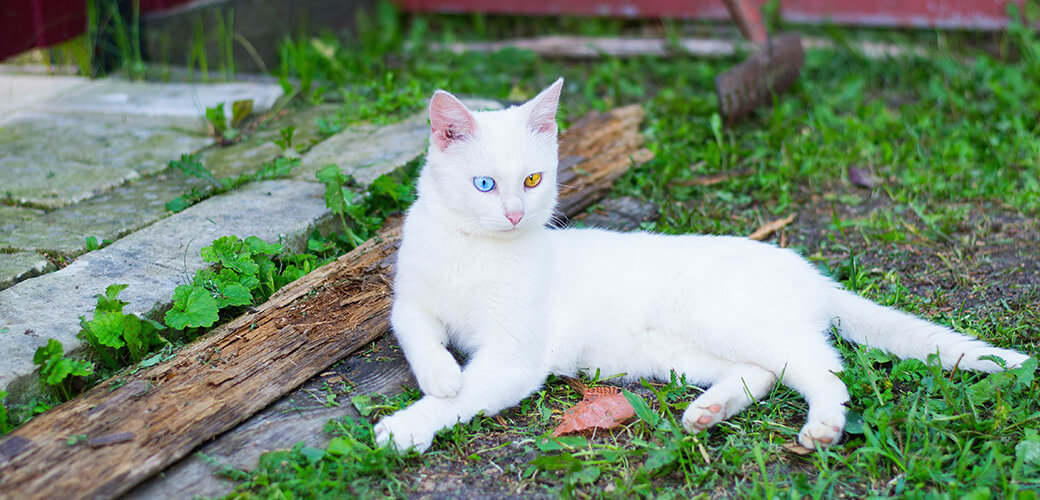
For a cat to be a true albino and not simply a white cat, the kitten needs parents with two recessive genes passed on to their offspring. In true albinos, these recessive alleles damage the TYR gene, preventing melanin production in the skin. The result is a cat with pink skin, which gives their white fur a pink cast. The albino cat can also have pink or light blue eyes due to the lack of pigment caused by the recessive gene. While beautiful, unfortunately, an albino cat is prone to various health problems, including sensitivity to light, immune deficiencies, and issues with their balance.
-
Can be found in
While any cat breed can be albino, it is most common in purebred cats such as the Siamese, Bengal, and Tonkinese.
2. Calico
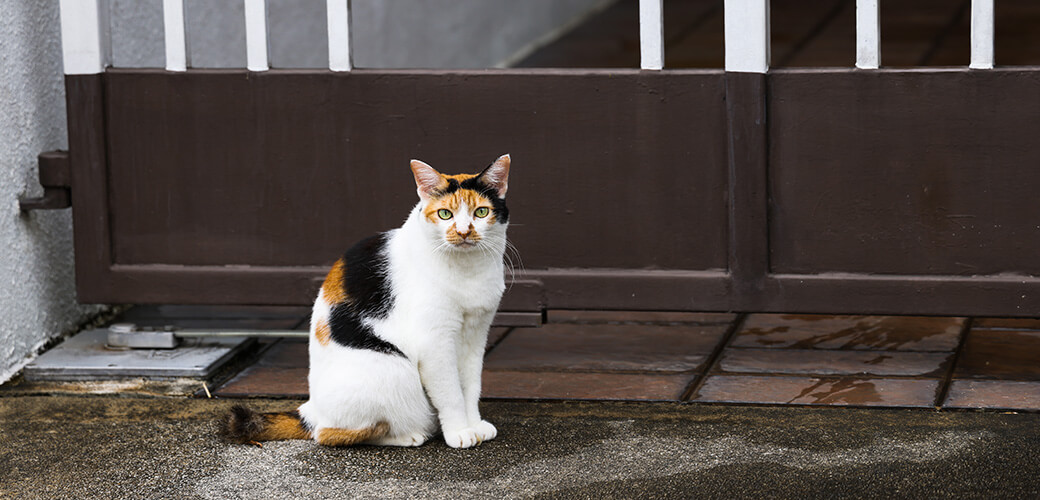
The super-cute calico cat has a tri-colored coat, typically with a white base and a combination of black and orange/red stripes on their back, tail, and face. This often creates a unique pattern, making calico cats much sought after. However, just like tortoiseshell patterns, virtually all calico cats are female. The only exception is when a male kitten has an extra X chromosome, although this is rare, with around one in every 3,000 calico cats born male. And this adds to the already premium price tag for a calico kit.
You can also get a diluted form of the calico pattern. Dilute calico cats are calico cats with less intensity to the tri-colors, for example, blue/gray instead of black, paler tan instead of orange, and a cream base coat.
-
Can be found in
Feline breeds with standards that allow calico coloration include the American Shorthair, British Shorthair, Persian, Turkish Van, Norwegian Forest Cat, and the Maine Coon.
3. Chinchilla
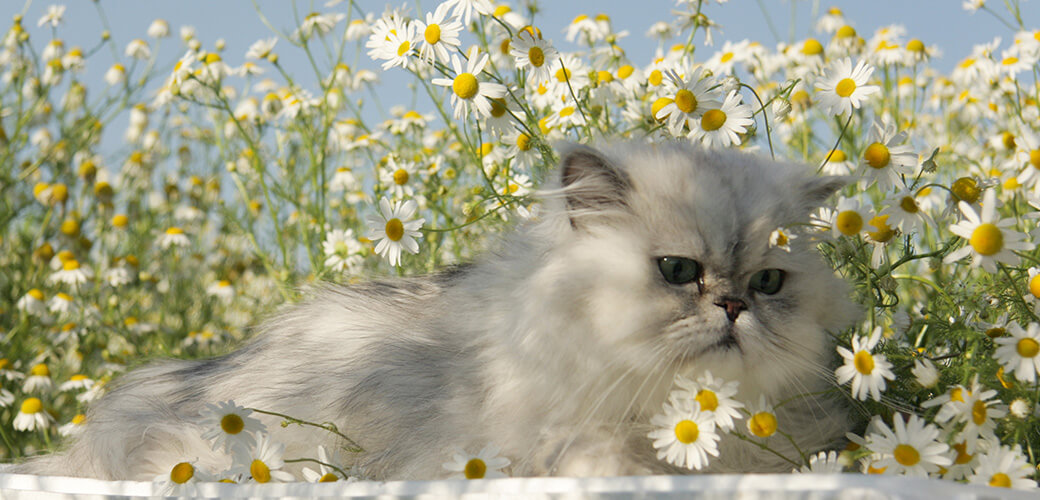
The chinchilla cat has a stunning coat pattern characterized by a pale base offset by silver-tipped hairs. The chinchilla coat pattern is a variant of the tabby and is created by a dominant melanin inhibitor gene. This converts the simple tabby pattern into a stunning silver coat but leaves the typical tabby stripes visible on only the very tips of the fur. This unique patination makes for a head-turning and highly desirable silver-white coated cat.
- Can be found in
This silver pattern can be found in Persian cats, where the chinchilla Persian has been selectively bred since the late 1800s.
4. Chocolate
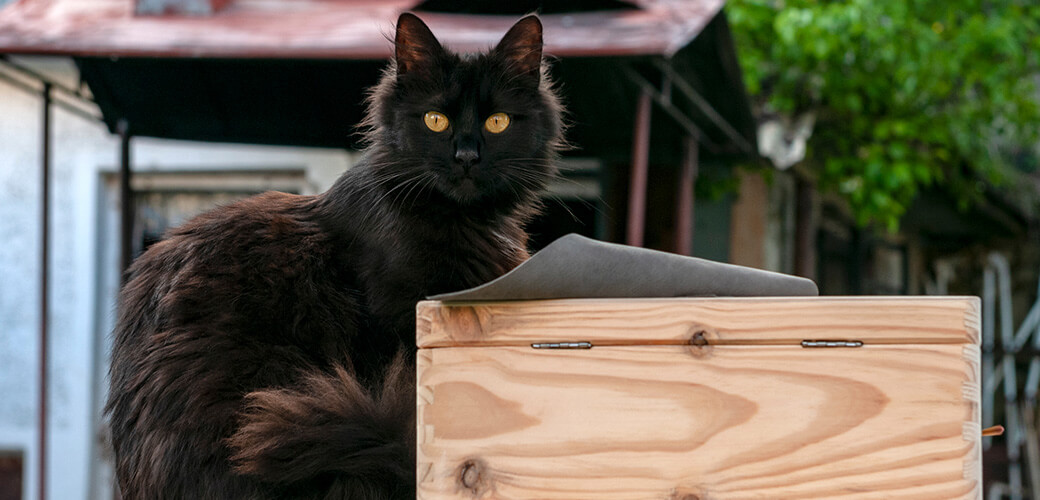
This rich chocolate hue is derived from a genetic mutation of the black gene found in felines. As a result of two recessive genes, the black is diluted to create a beautiful creamy shade of chocolate brown. The coloration in a cat’s coat can be solid, as seen in the Havana Brown or York Chocolate breeds, or shaded into points. Chocolate can also be seen in tabby or tortoiseshell coat patterns, and a cat’s genetic makeup determines the overall intensity.
-
Can be found in
Solid chocolate is found in purebreds such as the Havana Brown, while shaded chocolate points can be seen in breeds such as the Siamese and the Balinese.
5. Cinnamon
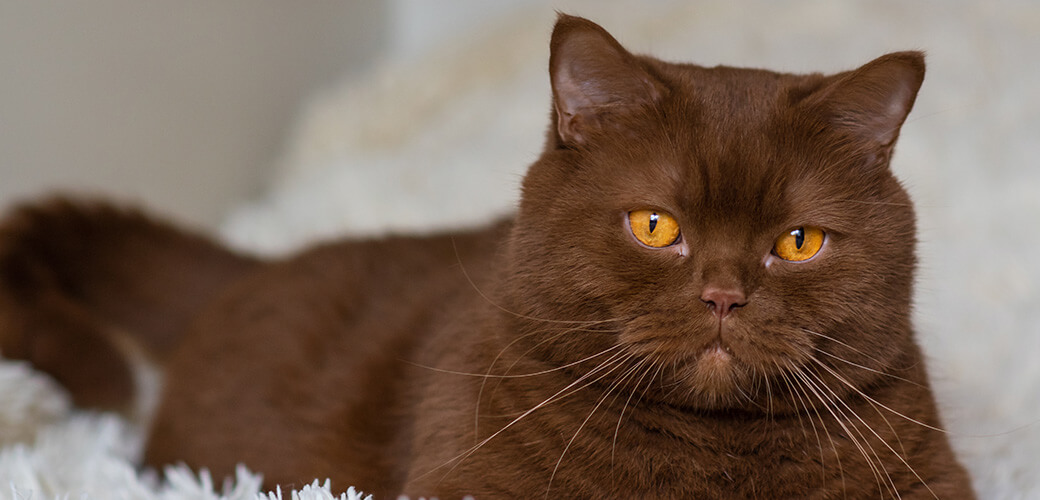
A diluted form of brown, a cinnamon color cat has a warm mid-tone that has a delicious reddish chestnut tint. The coat color is created by a second recessive allele of the dominant black primary gene to create what is known as the non-agouti gene cinnamon shade. The intensity of the coat shade can be further affected by other genetic factors in an individual cat.
A dense pigment gene can further dilute cinnamon to create another associated color – fawn. A lighter shade, fawn can also have a lilac color to make a very pretty cat.
- Can be found in
Cinnamon and fawn are mostly seen in Shorthair breeds, most notably the British and the Oriental Shorthair, as well as Burmese and Abyssinian pure breeds.
6. Colorpoint
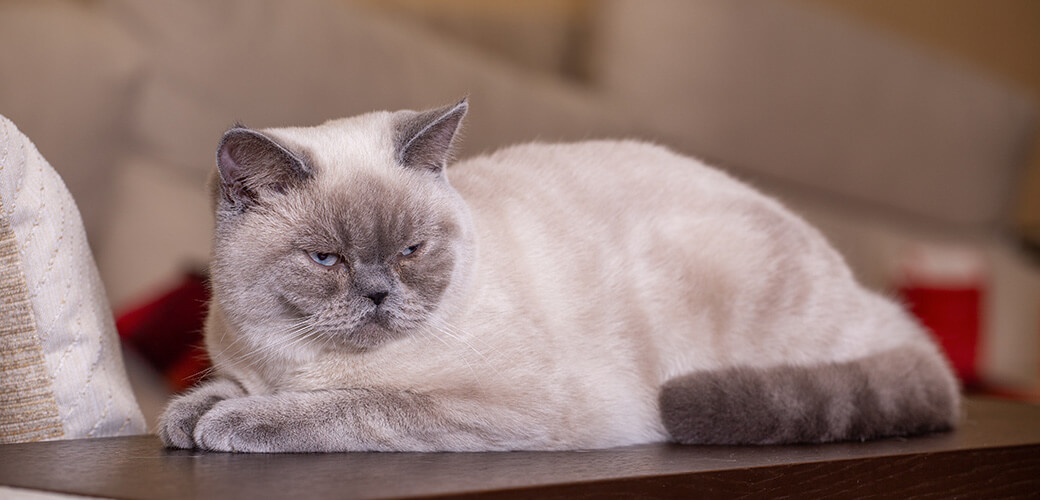
As the name suggests, a colorpoint has a typically light-colored coat tipped with color on the tail, head, and legs. Theoretically, the pattern can occur in any cat breed, although it is rare and is most often seen in the Siamese.
There are 16 possible shades in a colorpoint, from lilac and chocolate to blue and seal. Additional pattern variations include Flame (red) points, lynx pattern, and tortoiseshell. The colorpoint is created by a recessive albino gene which means pigment forms in certain areas, such as the face, but not in others. Colorpoint cats also often have blue eyes.
- Can be found in
Rare in most cat breeds, the colorpoint pattern is most often seen in the Siamese breed.
7. Cream
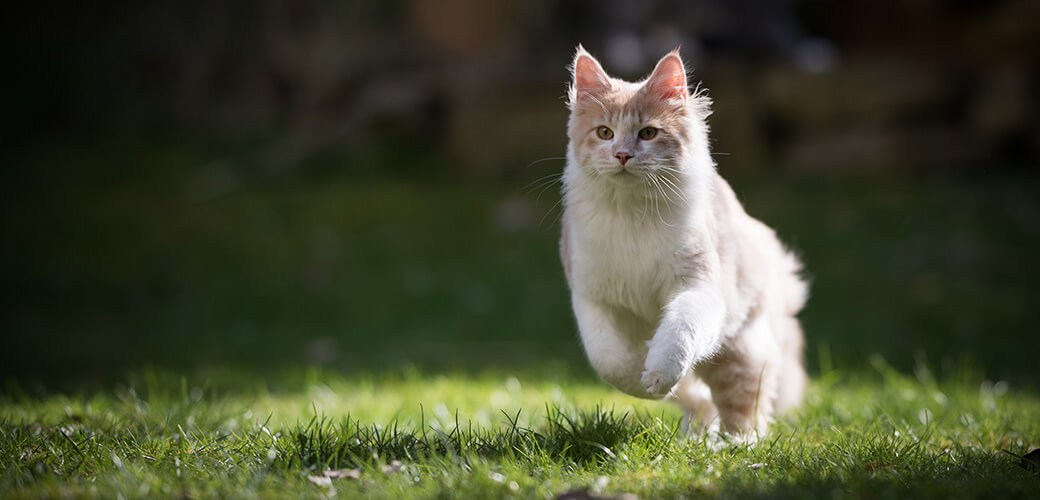
The coat of the rare cream cat is a diluted form of the primary red to create a pale creamy shade which, if you look closely, has a slightly rusty red tint. The cream shade occurs when a dense pigment gene dilutes the dominant red gene.
Cream cats are typically bred specifically to have the cream coat and are normally only found in pure breeds, where it is becoming increasingly popular. The cream can be either a solid color or a pattern, such as a colorpoint or a tabby variant affected shade. The cream can also be the base shade in a dilute calico cat.
-
Can be found in
The cream can be either a solid coat or part of a pattern and can be found in breeds such as the Siamese, Persian, and Shorthair.
8. Rosette
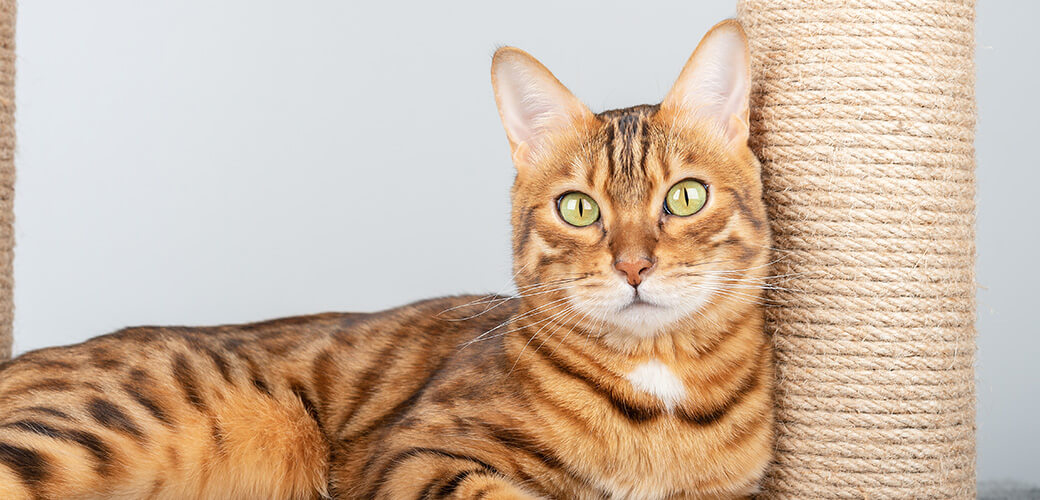
Also known as the spotted tabby pattern, the sublime rosette results from the agouti gene that creates ticked coat patterns, and the instantly recognizable tabby cat look. However, the rosette pattern is less widely known and has a distinctive wild vibe reminiscent of a leopard.
In the rosette, the dominant agouti gene enables the pigment to present randomly, from full-colored to diluted, creating a stunning pattern of bands, stripes, and solid patches, typically in black, red, and white.
-
Can be found in
A rare pattern, the rosette is most commonly seen in exotic breeds such as the Egyptian Mau, Ocicat, and the Bengal and the long-haired Maine Coon.
9. Smoke
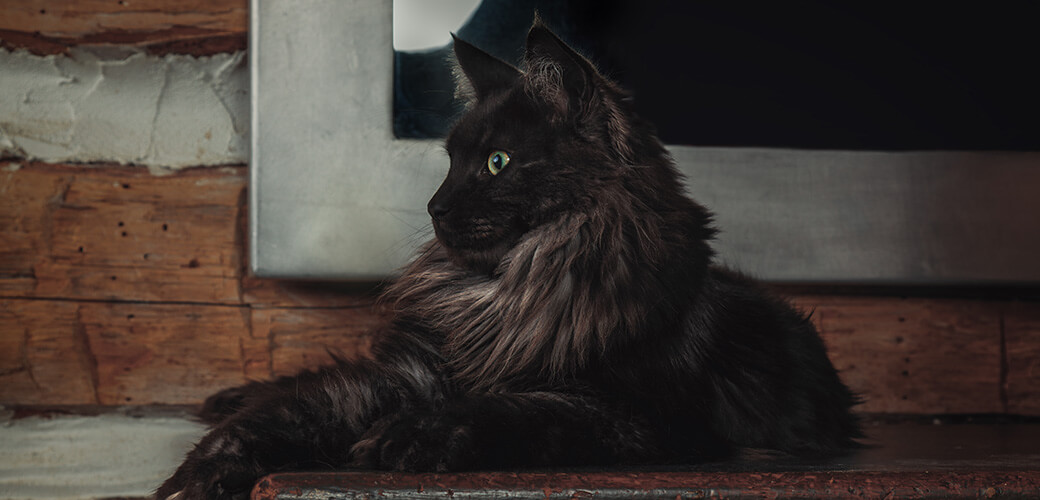
Like the silver in chinchilla cats, the smoke pattern is where the bottom parts of the hair in a cat’s solid-colored fur are left uncolored, leaving a smokey white or cream effect on their coat. The most familiar is the black smoke cat, whose coat is solid black, except for a shimmery white or cream section from the roots. The result is a shaded coat that almost shimmers.
Most black smoke cats will also have black faces and paws. It’s thought the smoke pattern was first created in the 1800s when a tabby with a dominant black gene bred with a silver-white cat. The combination of colors is then layered to create a litter of black smoke kittens.
-
Can be found in
While rare, black smoke is often seen in cats with luxurious coats, such as the Norwegian Forest, Turkish Angora, Siberian, Persian, and Maine Coon.
10. Tortoiseshell

While familiar, the tortoiseshell is considered quite rare. Unlike the tri-colored calico, the ‘tortie’ combines just two dominant colors – red and black – in a stunning pattern of random swirls. There is no white in the tortoiseshell coat, although shades of orange, gold, gray, and other diluted colors can also be found.
Interestingly, due to chromosomes, the tortoiseshell pattern is almost exclusively only found in female cats. And for a male to be a tortoiseshell, he will need an extra X chromosome, making a male tortie extremely rare.
-
Can be found in
The tortoiseshell pattern can be found in most purebred and mixed breeds.
What is the Rarest Cat Color?
All the colors and patterns in our guide are rare, but out of our top 10, the albino takes the title of the rarest. And this is because an albino cat requires parent cats with two recessive genes to create its ethereal coat. And this makes them highly sought after. But there is a catch, as the albino coloring makes the cat more vulnerable to certain conditions. This means this stunning cat needs extra care and attention to keep him happy and healthy.
Source:
- Basic Feline Genetics – The Cat Fanciers’ Association

